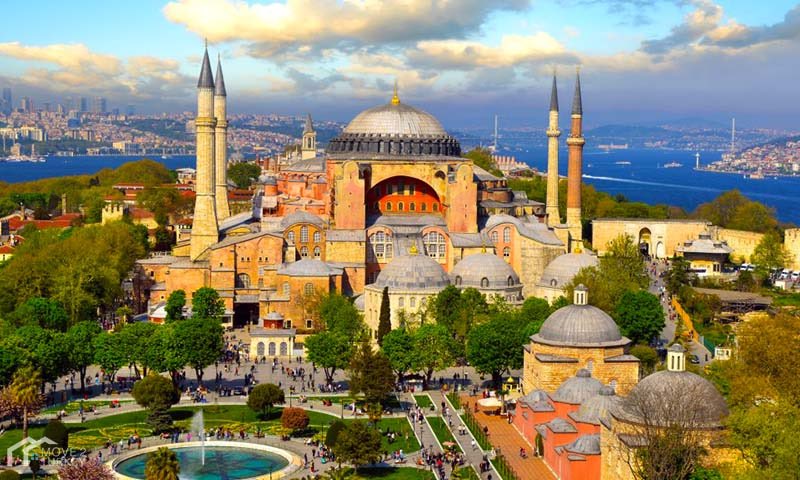eNews Spring 2022
Welcome to our Quarterly eNews with updates from the Peace Alliance!
Upcoming Events
- First Tuesday monthly, Empathy Circles, 5:30pm PT / 8:30pm ET and all times between and beyond
- 2nd and 4th Saturday Hope Story Circles 9:00am PT / 12 noon ET and all times between and beyond
- Second Tuesday monthly, National Monthly Peacebuilders Call, 5:30pm PT / 8:30pm ET and all times between and beyond
- Third Wednesday monthly, Department of Peacebuilding call, 5:00pm PT / 8:00pm ET and all times between and beyond
Look for our weekly Monday email with all the events for the upcoming week, and check the Calendar of Events on the website for connection information for everything!
Message from our Managing Director
“War and Peace” is a phrase we’ve heard over the course of our lifetimes, amplified recently with the horror of what’s happening in Ukraine and the ability for us to see it all happen in real time. I have often found myself challenged by the definitions of these words, and if I’m honest, spent most of this lifetime thinking of the former as something that happens on other lands — and the latter as the absence of the first. I appreciate that I now think of War and Peace as so much deeper. 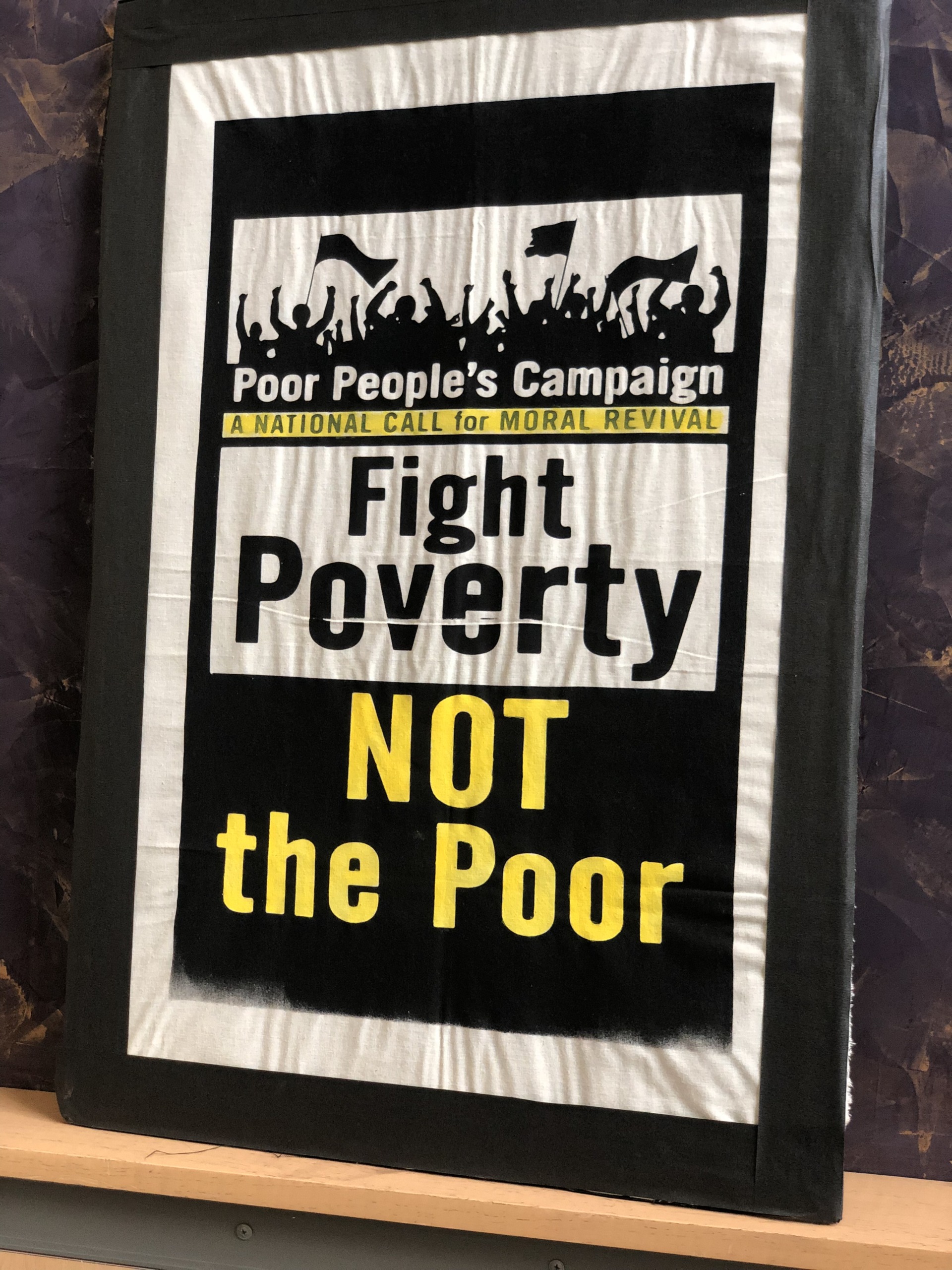
We’ve all heard the word war tacked onto other experiences or patterns we want to disappear, like the “war on drugs”, and I’ve often thought the use of it in that way lessened its intensity. But I think what I dislike about that use is that we don’t use the phrase on patterns that truly need to be dismantled — as opposed to false enemies that sound sexier in a sound bite. Don’t get me wrong, addiction is a disease that destroys all it touches. I am not minimizing the depths to which the use and addiction to drugs impacts our families and communities. But what if we thought in terms of a “war on addiction” or “war on the mental health crisis?” Wouldn’t those issues go to the heart of why people often turn to drugs to cope, and by proximity, take care of the need for drugs to be used at all?
The word peace is also difficult to define. We often think of peace as the absence of war or the absence of despair, but what if it is more of an action word? You’ve heard this from me before, but it bears repeating as we work together to manifest the kind of society we want to see. If peace is only achieved when other bad conditions or feelings disappear, then we are passive in our ability to realize peace. I prefer to think of it as something I work toward in every choice I make. Sometimes I am making those choices with regard to my own personal peace; i.e., Did I skip a meal today? Other times it’s about my choices regarding others; i.e., Did I stand up for someone when I saw them refused access to something they needed?
Here are some questions I invite you to ponder: Can we focus war on systems instead of symptoms? Examples of this would be “war on racism”, “war on poverty”, and “war on violence”. Is it possible to see whole communities lifted up when we identify and focus on dismantling patterns of behavior that our society has relied on to keep entire classes of people from flourishing?
As Marianne Williamson just recently reminded me on our National Monthly Peacebuilders Call, we need to get better at waging peace together!
In Solidarity with those who still struggle,
Diane Tate
Managing Director
Peace is Possible When Birthed in Love and Imagination
I recently watched a Netflix series, Rise of Empires: Ottoman, describing the conquest of Constantinople (modern-day Istanbul) in 1454 by Ottoman Sultan Mehmed II. In one scene he dreams of entering the Hagia Sophia, which was also a dream of mine that I realized ten years ago on a tour throughout Turkey. It struck me as tragic when I think of the beauty of this revered temple and the destruction expended to possess her. Sultan Mehmed was brilliant and creative, and I thought of the outcome for history had he used his brilliance and imagination toward peace. As a young prince [age 5], Mehmed was removed from his mother and never saw her again, told not to cry, and began his training to be Sultan. Part of his training included corporal punishment to break him. His mentor was not kind; his father was a distant figure in his life. He was robbed of love. Sultan Mehmed was determined to make his deceased father proud by accomplishing something everyone else had tried and failed, including his father – conquering Constantinople. What if he had not needed to prove to his father that he was worthy of his love? What if he had felt safe, loved and protected as a child?
The conquest of Constantinople was 600 years ago and yet today, we have similar dynamics unfolding on the world stage in Russia’s determination to conquer Ukraine. It is said that Putin is determined to regain dignity for Russia after the humiliation of losing the cold war. There seems to be a similar thread in these leaders’ thirst for power – childhoods void of feeling safe, loved and protected.
Growing up, “Putin lived in a ‘kommunalka’, a communal apartment, where several families who are not related live in the same apartment because they cannot afford one of their own…so many tales of fights involving the young Vladimir have surfaced that they sound more like scenes from a Hollywood thriller about gangs from Chicago or the Bronx…Putin himself has been quite open with journalists about what he was like in Leningrad in the 60s: ‘…I was a hooligan…I was a real hood…Growing up in the yard was like living in the jungle.’ And Vladimir’s life soon began to develop according to the laws of the jungle…to be top dog out there in the yard, you had to smash your opponent in the mug and ‘work him over’ (this is the expression Putin once used about terrorists, when he was already president). What’s more, you had to fight desperately ‘to the last drop of blood’, without backing down.”
Suffice it to say, this does not seem like an idyllic childhood where one felt safe, loved and protected. Dreams were limited to wanting to be lifted out of poverty and be respected. In the KGB, and as president of Russia, Putin found that security and respect. In the past and currently, Putin has been humiliated on the world stage and is acting from that place – a dangerous place to be cornered with a need to come out fighting – which he has practiced since childhood.
We all have a need to feel safe, loved and protected, as children and as adults. So many in our society do not have that experience. If I could summon the imagination of someone like Sultan Mehmed, I would ask him to go back in time and imagine how to conquer poverty, hunger, and childhood abuse, not the Roman Empire. I would ask for that to be his legacy. I would give all of them safe, loving, protected childhoods. And I would give Sultan Mehmed back his mother.
Kathy Kidd
National Field Coordinator
Peacebuilding. What is it Good for? Absolutely Everything!
“War. What is it good for?” That song permeated the air waves during the seemingly endless days of the American war in Vietnam. The answer was — and is — “Absolutely nothing.”
“Ohhh, war, I despise because it means destruction of innocent lives. War means tears to thousands of mothers’ eyes when their sons go to fight and lose their lives … War, it ain’t nothing but a heartbreaker. War, friend only to the undertaker … War can’t give life, it can only take it away.”
The song continues, “Peace, love and understanding tell me, is there no place for them today. They say we must fight to keep our freedom, but Lord knows there’s got to be a better way …”
War is not just destruction of life and land in the international world. It is violence in its myriad forms and on all levels from our personal lives –to our schools and our communities and all social systems that influence our culture.
There’s got to be a better way than war. What about a new foreign policy for the 21st century? What about a cabinet-level Department of Peacebuilding (DoP) to make peace a national priority?
There is a resolution in Congress which expresses the mindset of the House of Representatives regarding many of today’s greatest national security challenges and outlining a new framework for foreign policy for the 21st century (H.Res. 877). There is also a bill in Congress calling for a cabinet-level Department of Peacebuilding to — among other things — PREVENT war (HR 1111/ DoP).
Isn’t it time, in this 21st century, to create a new foreign policy? H.Res. 877 sets forth national security challenges facing people:
1) the spread of infectious diseases and global pandemics;
2) the climate crisis;
3) the proliferation and threat of use of nuclear weapons and materials;
4) human rights violations;
5) corruption, conflict and violence;
6) authoritarianism and distrust in democratic institutions undermined by disinformation;
7) gender, economic and social inequality; and
8) transnational White supremacist violence and racist nationalism.
These national security challenges cannot be primarily solved through the use of military force or Department of Defense budget increases. H.Res. 877 calls for U.S. foreign policy to focus on diplomacy, conflict resolution, global cooperation, accountability and non-military tools of statecraft. It also calls for investing in diplomacy, international justice and cooperation, peacebuilding, and green development, while cutting security assistance and weapons sales to human rights abusers.
Isn’t it time to create a cabinet-level Department of Peacebuilding to implement a new 21st century foreign policy? The DoP defines peacebuilding as a range of measures targeted to reduce the risk of lapsing or relapsing into conflict. The national security challenges addressed in H.Res. 877 are framed in HR 1111 as root causes of violence. H.R. 1111 also addresses root conditions of peace where all can thrive. Offices within the DoP create and promote violence prevention policies, including the offices of: International Peacebuilding; Arms Control and Disarmament; and Human Rights and Economic Rights.
Isn’t it time for a new 21st century domestic policy? H.R. 1111 recognizes that domestic peace is tied to international peace. We have to build peace from the ground up, in ourselves and in our children. HR 1111 also includes offices of Peace Education and Training and Domestic Peacebuilding Activities.
We know war offers no long-term solutions and is good for absolutely nothing. It is time to recognize war for what it is: obsolete, oppressive, destructive, a heartbreaker. “But Lord knows there’s got to be a better way.” Peacebuilding is a better way.
Ask your member of Congress to cosponsor H.Res. 877
Ask your member of Congress to cosponsor HR 1111
If not us, who? If not now, when?
Nancy Merritt
National Department of Peacebuilding Lead
Ongoing Fallout from the “War on Crime”: Over 57 Years of Targeted Violence
Wondering why we continue to be at war in our society and within the criminal justice system in the good ol’ USA? One only needs to look back a few generations to the Law Enforcement Assistance Act that American President Lyndon Johnson presented to Congress on March 8, 1965, which first established a direct role for the federal government in local police operations, court systems, and state prisons. This left a legacy of crime, incarceration and inequality.
Johnson declared a national “War on Crime”, stating that crime was a “crippling epidemic hindering the progress of the nation”. This public policy initiative was focused on the sociological and economic factors that the government believed led to criminality, and then giving power to police and other law enforcement officials to be responsible for monitoring “poverty, racial antagonism, family breakdown, [and] the restlessness of young people,” according to President Johnson’s Commission on Law Enforcement and the Administration of Justice.
As one may imagine, that did not bode well for creating peace in our streets. “For example, in Detroit in the early 1970s, officers of a decoy squad known as STRESS (an acronym for “Stop the Robberies, Enjoy Safe Streets”) killed 17 African American civilians—the vast majority unarmed—during its two years of operation. If the “War on Crime” was meant to be a useful metaphor that would spur policymakers into action, it quickly evolved into what resembled an actual war.
“Law enforcement and criminal justice remain at the heart of the nation’s economic and social programs. Although the Johnson administration had created a blueprint for a national crime-control program to improve American society, the long-term impact of the shift toward surveillance and confinement has brought our nation to a fiscal and moral crossroads.”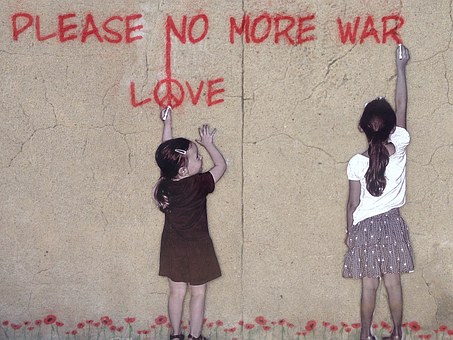
No Justice, No Peace.
“There can be no peace in the world unless there’s justice, and there can be no justice without peace”. Martin Luther King Jr.
So how does Peacebuilding show up in the US justice system?
Peacemaking Criminology
The field of critical criminology argues against the currently dominant US criminal justice system, including peacemaking criminology, which is rooted in a faith-based and holistic approach to addressing crime and justice. “Peacemaking criminology “regards crime as the product of a social structure that puts some groups at a disadvantage, sets people against one another, and generates a desire for revenge”. * Peacemaking criminology has a long history grounded in social movements and was influenced by such individuals as Martin L. King Jr., Fred Hampton, Mahatma Gandhi, Dorothy Day, Leo Tolstoy, Malcolm X, and many other peace activists throughout history; from environmentalists to anti-war activists.
Peacemaking criminology challenges critical criminology for not relating to the field of peace and conflict studies, which stresses the relationship values such as collaboration, respect, forgiveness, accountability, and responsibility. It has not been accepted because it challenges the dominant ideology within the field and US society on such basic values as capitalism, retributive justice, and institutionalization.” American Friends Service Committee (AFSC), and Mennonite Central Committee (MCC), and others involved with the peace churches provide both social services and activism which, while protesting systems and institutions, they work within to reform at the same time.
Restorative Justice: Humanizing the Justice System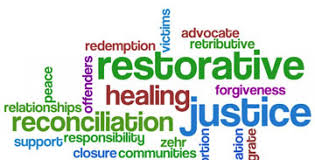
The Peace Alliance recognizes the exponentially growing movement of Restorative Justice to be one of the key systemic transformations occurring right now in the United States. It is a powerful on-the-ground response to the many issues our country faces pertaining to justice. Restorative Justice is a process to involve those who have a stake in a specific offense, and to collectively identify and address harms, needs and obligations, in order to heal and repair the harm to the extent possible.
“Crime represents damaged relationships,” offers Howard Zehr, one of the founders of the RJ movement in the United States and author of The Little Book of Restorative Justice. Zehr is considered the “Grandfather of modern day RJ”. His book emphasizes identifying the justice needs of everyone involved in a crime. This has become a worldwide movement of growing influence that is helping victims and communities heal, while holding criminals accountable for their actions.
“Zehr shares that, “Many feel that the criminal justice process deepens societal wounds and conflicts rather that contributing to healing or peace.” This is evidenced in the different approaches towards addressing crime and justice:
The traditional systems of justice asks:
1. What laws have been broken?
2. Who did it?
3. What do they deserve?
Restorative Justice asks:
1. Who has been hurt?
2. What are their needs?
3. Who is responsible for meeting these needs?
This holistic approach to dealing with crime and conflict offers us a way to “humanize” our overloaded and imperfect system of justice. Justice does not always mean punishment.”
Know Justice, Know Peace.
Restorative Justice (RJ)
- is a different way of thinking about crime and our response to crime
- focuses on repairing the harm caused by crime and reducing future harm through crime prevention
- requires offenders to take responsibility for their actions and for the harm they have caused
- seeks redress for victims, recompense by offenders and reintegration of both within the community
- requires a cooperative effort by communities and the government
Patty LaTaille
Humanizing Justice Systems Lead
Peace and War Within
I couldn’t figure out why I was having such a mental block, perhaps resistance, to writing this piece. I recently co-authored Peace is a Human Right with my colleague, Diane Tate, that I believed to be a well-thought-out discourse on war. The prompt: What is “war” and what is “peace”, and how does intentionality relate to each? Is peace just the absence of war, or is there more to it than that? should not have been that hard to speak into. It has proven to be especially difficult because I am perfectly exhausted from constantly being at war. I am, however, vehemently committed to building peace, which I define as the ability to live an optimal life, free from disturbance.
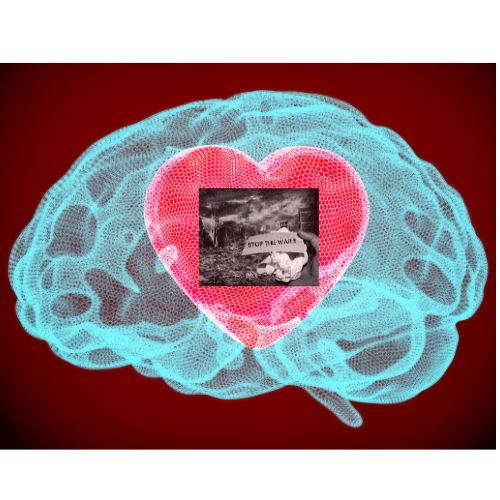
Those definitions of peace, experienced as freedom from disturbance, and war, experienced as consistent interpersonal violence, are vastly different metaverses in distance between my definitions and the analytical theorizing and posturing that has been done in an explanation of peace and war over the centuries. As I experience it, a culture of dominance socializes violence as an acceptable form of behavior. It is a culture that distracts from all forms of violence by focusing on the violence that is tangible, as witnessed in physical violence, when the other forms of violence are arguably more trauma inducing. Those other forms of violence become an internalized war — the war within — that creates a barrier towards peace. A culture of dominance gives birth to Violence Impacted People, a term I’ve coined to describe people who exist in various forms of trauma, who continuously struggle with power dynamics and are unable to achieve freedom from disturbance, or peace. Ukraine is simply the latest installment of a global culture of dominance; there are wars continuing in many communities. We have been conditioned to normalize violence as acceptable behavior because we are rooted in individualism, free market competition and systems of punishment under the guise of freedom. We should be following the leadership of non-westernized ideology or pre-colonized society, transforming to become rooted in interconnectedness, agreement, and accountability – Ubuntu, I am because You are – which breeds peace.
Throughout decades of work with different people in various communities across the world, there is a recurring theme: people share the desire for freedom from disturbance and are conflict avoidant. Avoiding conflict doesn’t achieve peace, working through conflict creates more sustainable peace. Forced hostile conflict is one of many responses to prolonged disturbance when power and control are prioritized. Identifying outside of dominant cultural norms and struggling with power creates a state of continuous disturbance that is a forced hostile conflict — within which is the very definition of war. As Violence Impacted People, not only do we speak of war, we should also take time to look in the mirror and acknowledge the war within, so that we can begin healing. Working for peace – freedom from disturbance – through conflict and complex power struggles toward a non-dominant culture is the beginning of healing from violence. My radical resistance to war, and the war within, is to create peace in my body, my home, and my community. That is the intentional work I do everyday, and invite our community to do as well.
JoHanna “J” Thompson, MPA
Community Peacebuilding Lead
Teacher Appreciation Starts with Advocating for Peace-filled Schools
This week is Teacher Appreciation week in the U.S. All across our country, teachers will get notes from their students, perhaps a catered lunch in the teacher’s lounge, or sometimes cupcakes and freshly baked cookies delivered in a beautiful tin from a class parent. All of these special moments are lovely, and I know teachers appreciate being thought of by those they serve during this week, but I often compare this week to the fact that as a country, we dedicate the shortest month of the year to Black History Month. Both teacher appreciation and Black History could be celebrated every day if we lived in a society that prioritized and integrated the importance of such groups as the foundation of our communities.
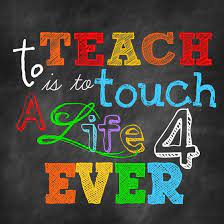 What if we focused on creating Peace-filled schools as a year-round teacher appreciation? What if schools were the most highly regarded buildings in any municipality with clean and maintained furnishings, the latest technological advancements to enhance the student and teacher experience, fresh and locally sourced food to serve balanced and nutritional meals, trained trauma specialists available to students and teachers to help them process any trauma they may be struggling with – along with minimizing the stigma in asking for help; in addition to fully- funded music and art programs as a part of the core educational requirements, and each classroom filled with supplies appropriate to the number of students so that no teacher has to buy anything for their students out of their own paycheck … oh, and how about their paycheck rivals the highest paid city worker on the payroll?
What if we focused on creating Peace-filled schools as a year-round teacher appreciation? What if schools were the most highly regarded buildings in any municipality with clean and maintained furnishings, the latest technological advancements to enhance the student and teacher experience, fresh and locally sourced food to serve balanced and nutritional meals, trained trauma specialists available to students and teachers to help them process any trauma they may be struggling with – along with minimizing the stigma in asking for help; in addition to fully- funded music and art programs as a part of the core educational requirements, and each classroom filled with supplies appropriate to the number of students so that no teacher has to buy anything for their students out of their own paycheck … oh, and how about their paycheck rivals the highest paid city worker on the payroll?
If all of those conditions were met, we’d see a very different experience for our children and for our society. We advocate for a better world because this society will not survive if we do not shift our priorities when it comes to our children, and the people who tirelessly and selflessly pour all of themselves into them everyday. I will take the time to appreciate teachers this week, but I want to live in a society that appreciates them enough to put our money where our mouth is, and create the institutions they deserve to educate OUR children.
Say “Thank you” to an educator this week and every week for the rest of the year, then advocate with your elected officials to prioritize the health and safety of the most selfless members of our communities. Your voice matters whether you have school-aged children or not. You were once a student, and I know there was a teacher who you remember as a hero in your story. Honor them by celebrating teacher appreciation every day.
Diane Tate
Jelena Popovic
Practicing Peace in Schools Lead
United Nations International Day of Multilateralism and Diplomacy for Peace – April 24th
And the War in Ukraine and President Zelenskyy and the Need for a UN “Infrastructures for Peace” Resolution
April 21, 2022
How will the General Assembly promote its 4th annual International Day of “Multilateralism and Diplomacy for Peace” on 24 April this year as the war in Ukraine teeters on the brink of WW-3? That UN day calls for ‘promoting the values of the UN, reaffirming faith in principles enshrined in its Charter, including multilateralism and international law for sustained peace through diplomacy. And sharing these advantages through public awareness-raising.’ So how are “multilateralism” and “diplomacy for peace” faring at the UN and in the world these days? According to Ukrainian President Zelenskyy – not well, having recently told the Security Council there is NO “security” there. He knows this from bravely leading his country’s defense against the illegal, immoral Russian invasion of Ukraine (however justified Russia’s contentions may or may not be). Since a negotiated settlement seems unlikely, this conflict can only be resolved by one side winning the war. As that is how the age-old War and Peace game has been played through history. But in the 21st Century that game is pathetic and annihilating. Yet is humanity capable of becoming civilized in resolving its conflicts?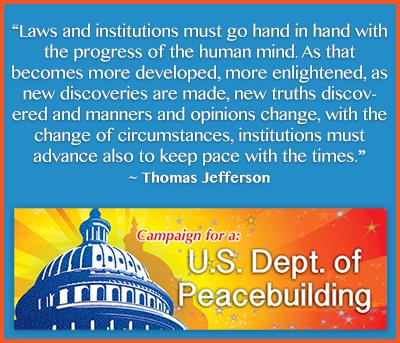
Comedy and tragedy met head-on in Comedian turned President Zelenskyy and the Gospel of peace happened. For in his urgent pleas to the world to stop the bombing, he also pleads for “new (peacebuilding) institutions.” Because all current ones (including the UN) failed to prevent this gut-wrenchingly barbaric way of resolving conflict from erupting. Ukraine is not the only country where such atrocities occur. Yet Ukraine gets the media attention because President Zelenskyy in the chaos remains articulate and media savvy about issues of War and Peace. Can this be a teachable moment for change?
“War is a failure of politics and humanity, a shameful capitulation, a stinging defeat before the forces of evil” Pope Francis preaches. Thus, we observe this April 24th UN day addressing President Zelenskyy’s plea for “new peacebuilding institutions” by sharing news of the rapidly evolving global movement calling for governmental Departments, Ministries and Infrastructures for Peace (I4P) aligned with the science of nonviolence, proven to prevent and reduce violence by making “nonviolence” a national priority organizing principle at all levels. This is also the perfect UN day to amplify the need for the General Assembly to pass a resolution urging all member states to establish I4P worldwide to end the scourge of war that can save the planet from extinction. For as Martin Luther King said “it is nonviolence or nonexistence” as humanity foolheartedly pushes the envelope ever closer to that fateful precipice divide.
Yet ‘war and violence’ cannot be abolished until alternate more effective, life-affirming ‘peace and nonviolence’ systems are solidly in place. As these structures will provide the platforms necessary to enable positive conflict resolution to take place at all levels. “Infrastructures for Peace” are a critical peacebuilding step in constructing the culture of peace. A UN Development Program (UNDP) Issue Brief on I4P published by their Crisis Prevention and Recovery Unit documents remarkable I4P successes reducing and preventing violence in troubled countries. UNDP defines I4P as a network of interdependent systems, resources, values and skills held by government, civil society and community institutions that promote dialogue and consultation; prevent conflict and enable peaceful mediation when violence occurs.
President Zelenskyy wisely implores us to find new approaches — seeming to believe war is not inevitable (revolutionary thinking for a commander-in-chief). Because the underlying issues that caused this war cannot be solved militarily, it is time to mainstream peacebuilding. Albert Einstein said war is a failure of “imagination.” Yet in this 21st Century, peace is really BEYOND just “imagination” because the evidence-based discipline of peace studies about the science of nonviolence has become firmly rooted in the last 50 years since the UN was founded after WW 2. Unfortunately, this knowledge remains largely in the ivory towers not yet reflected much in governmental policies and practices. The power of governmental I4P is that they intentionally reflect and mandate this significant knowledge about prevention and the need to comprehensively get at the root causes of violence. Because the best way to end war is to prevent it from happening.
I4P are aligned with the new UN post Covid recovery Our Common Agenda (OCA) designed to steer the world from breakdown to breakthrough at this most dangerous inflection point in history. Secretary-General Gutterres’s OCA report, after the 75th anniversary of the UN’s founding, calls for “a new agenda for peace” to accelerate implementation of existing UN agreements, such as the Declaration and Programme of Action on a Culture of Peace (A/RES/53/243). OCA’s Commitment #3 to “promote peace and prevent conflicts” stresses reshaping response to all forms of violence and investing in prevention and peacebuilding” (ie. that’s what I4P do!). OCA seeks to identify global public goods where governance improvements can be proposed for UN reform. A viable reform addressing commitment #3 exists in the growing peacebuilding field promoting I4P to build and strengthen capacity for the culture of peace. Such I4P architecture can include governmental and civil society commissions, committees, councils, academies and forums for peace at the local, national and international level. Country-wise, Costa Rica has long had an active Ministry for Justice & Peace. The Solomon Islands, Nepal, Autonomous Region of Bougainville, Ethiopia and Afghanistan have had national ministries of various sorts at different times. The US and Canada have developed actual national I4P bills in their legislative bodies.
Civil society participation is a major emphasis of OCA which challenges us “to strengthen the global governance architecture to address the world’s most pressing challenges … to do what is necessary for peace.” Thus, the Global Alliance for Ministries and Infrastructures for Peace (GAMIP) strongly asserts that I4P are necessary for peacebuilding as shown by its PeaceNow “OneBillionSignatures4Peace” online petition garnering worldwide signatories calling for the UN General Assembly to pass an I4P resolution.
Conflict prevention is a major responsibility of member states as set forth in the UN Charter. Diplomacy is still the primary political means at the UN for conflict prevention. But formal diplomacy between high level officials is obviously not enough as it only goes so far. I4P are a supplemental layer of conflict prevention enhancement that synergistically reinforces and deepens diplomacy by coordinating at the other levels. I4P are a win-win, advancing both the UN’s OCA while also helping achieve the prized UN Sustainable Development Goal #16 on “Peace, Justice and Strong Institutions” too.
The Institute for Economics & Peace provides metrics for measuring peace in The Global Peace Index. Their 2021 report states: The key to building peacefulness in times of conflict is Positive Peace. Positive Peace is the attitudes, institutions and structures that sustain peaceful societies. Most countries found to be in deficit, record increasing levels of violence. High Levels of Positive Peace are found in countries where institutions are resilient and responsive to society’s needs, with structures in place that create an environment conducive for the nonviolent resolution of grievances.
In conclusion, we observe the April 24th UN Day of Multilateralism and Diplomacy for Peace by sharing this article globally to emphasize the urgent need to establish governmental departments, ministries and other infrastructures for peace worldwide that can shift our harmful trajectory of violence into the culture of peace. As we believe that will help the UN fulfill its vision for this important UN Day. War is a crime against humanity. Violence is a primary obstacle to planetary well-being. For it impedes implementation of the Culture of Peace Programme of Action, whose Article 5 declares that governments have an essential role in promoting the culture of peace. Thus, conflict transformation can come about by creating governmental “infrastructures for peace” to build the structures necessary to support a strong and enduring culture of peace. “Culture of Peace” and “Infrastructures for Peace” are mutually supporting aligned concepts. The UN Culture of Peace Programme of Action provides the overarching global justification imperative for establishing I4P. And I4P provide a demonstrated concrete, viable means for implementation of the Culture of Peace UN normative mandate.
Escalating existential violence indicates that government is not meeting its basic mandate to secure humanity’s right to peace and security. Peace requires a robust, sustainable architecture that structurally facilitates conflict prevention. I4P are effective because they apply the science of nonviolence to building the underlying structures proven conducive to conflict prevention. For peace to prevail on earth, a primary world focus now must be on establishing governmental I4P to build and strengthen the culture of peace and institutionalize peacebuilding. So, on this International Day of Multilateralism and Diplomacy for Peace we urge the UN General Assembly to pass an I4P resolution in 2022.
MAY PEACE PREVAIL ON EARTH !
“Those who make peaceful revolution impossible will make violent revolution inevitable. It is an unfortunate fact that we can secure peace only by preparing for war. Peace is a daily, a weekly, a monthly process, gradually changing opinions, slowly eroding old barriers, quietly building new structures.” US President John F Kennedy
Global Alliance for Ministries and Infrastructures for Peace (GAMIP.ORG) is a 15+ year old worldwide civil society organization composed of country I4P campaigns, organizations, committed citizens and government officials supporting the development of departments, ministries and other infrastructures for peace.
Anne Creter
Fostering International Peace lead
Global Alliance for Ministries & Infrastructures for Peace (UN Committee Chair)
Global Movement for the Culture of Peace
Peace Through Unity UN NGO Rep
Resilience and Hope
There are times in our lifetime when it seems there are so many things to think about, so many concerns, so many challenges. It can be overwhelming. The disruptions to what we might consider our day-to-day existence can actually begin to feel like our new normal, and it’s easy to wonder — how did I get here?
What I know is true is that change is a constant in our existence. I also know that change usually doesn’t feel good, at first. It might end up feeling good, but at the point of crossing the edge, it’s uncomfortable. We might tip-toe over that edge and want to go right back to where we were. Then we might tip-toe over for a bit longer, and then return. In some cases, we are catapulted over the edge by outside forces, and have no way to return — no matter how much we might want to. 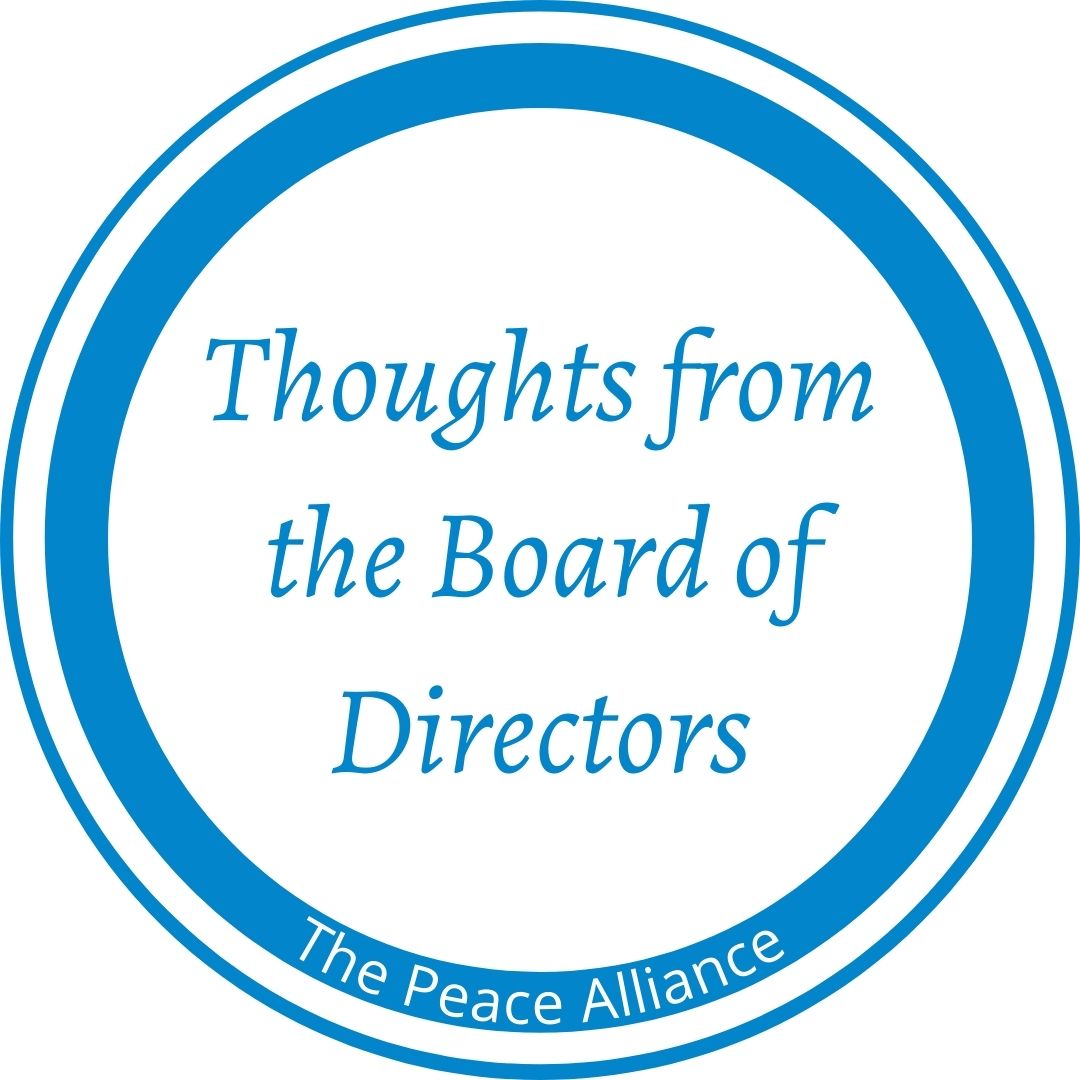
What I also know is true is that resilience is one of the most powerful superpowers we have as human beings. As much as we might feel uncomfortable, discouraged, even enraged by a change that is thrust upon us, we have enormous capacity for dreaming into a new future, for defining hope for a different outcome than we might have imagined, and for sense-making in new forms. Our gift of resilience, coupled with our imagination, can help define a day-to-day that becomes even better than before, and one that we might never have imagined or crafted a path toward had we not been impacted by unexpected forces.
I wish you resilience, hope, dreaming and imagination to guide you always, and most especially when life throws you over an unexpected edge of change.
Terry Mason
on behalf of the Board of Directors, the Peace Alliance
About The Peace Alliance
Mission:
The Peace Alliance empowers civic action toward a culture of peace.
Who We Are:
We are an alliance of organizers and advocates taking the work of
peacebuilding from the margins of society into the
center of national discourse and policy priorities.
We champion a comprehensive, collaborative approach
to peace and peacebuilding.
www.peacealliance.org


